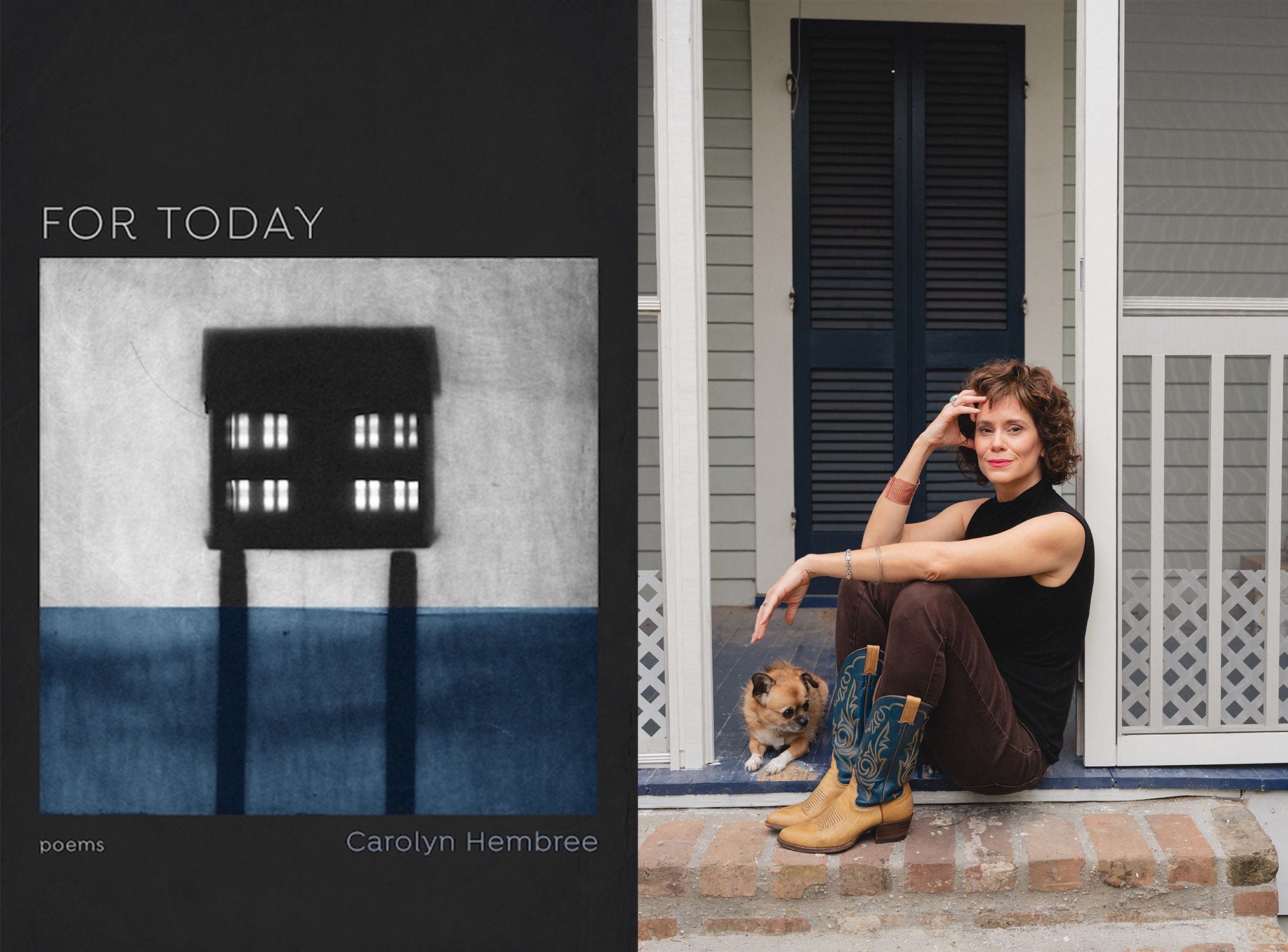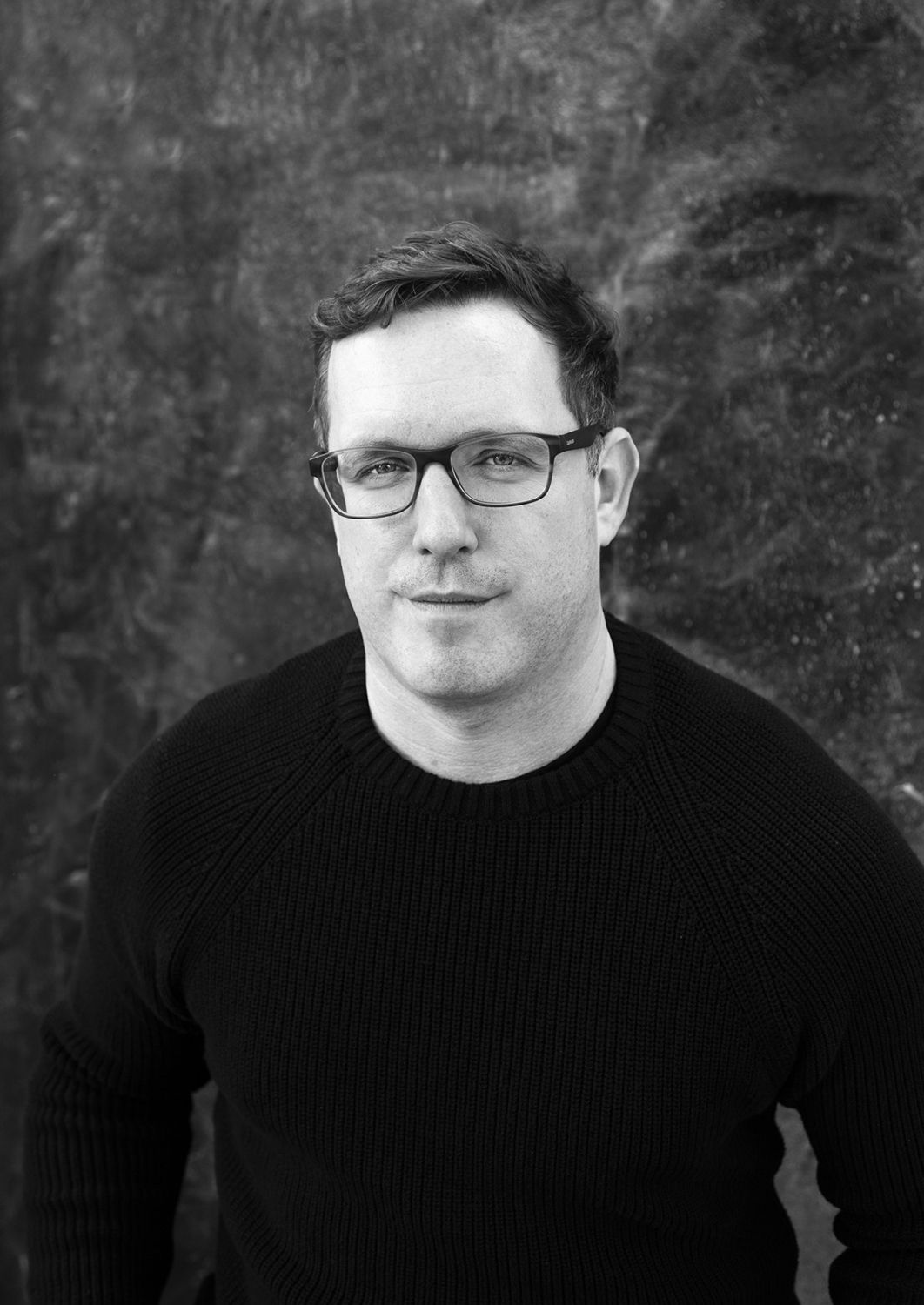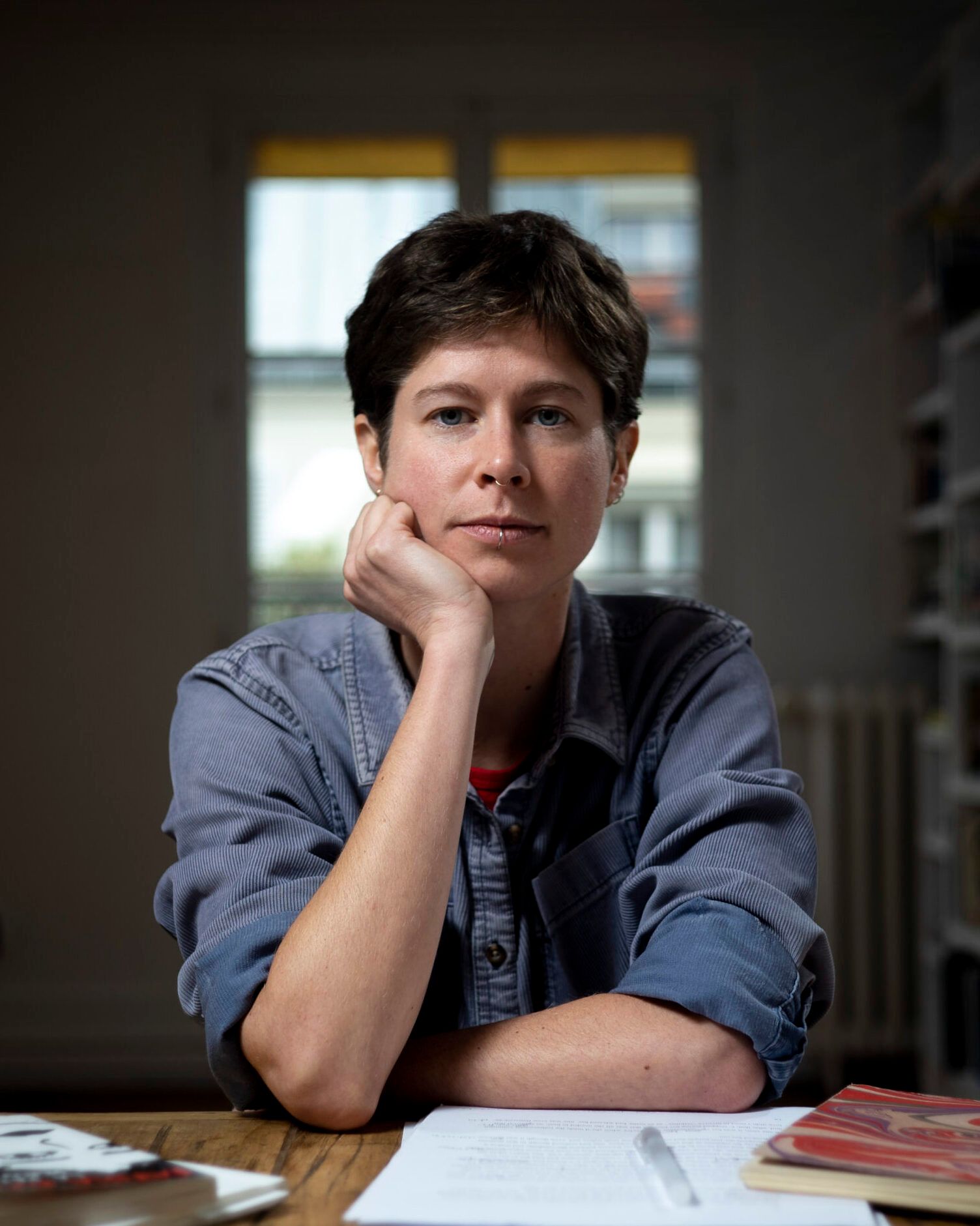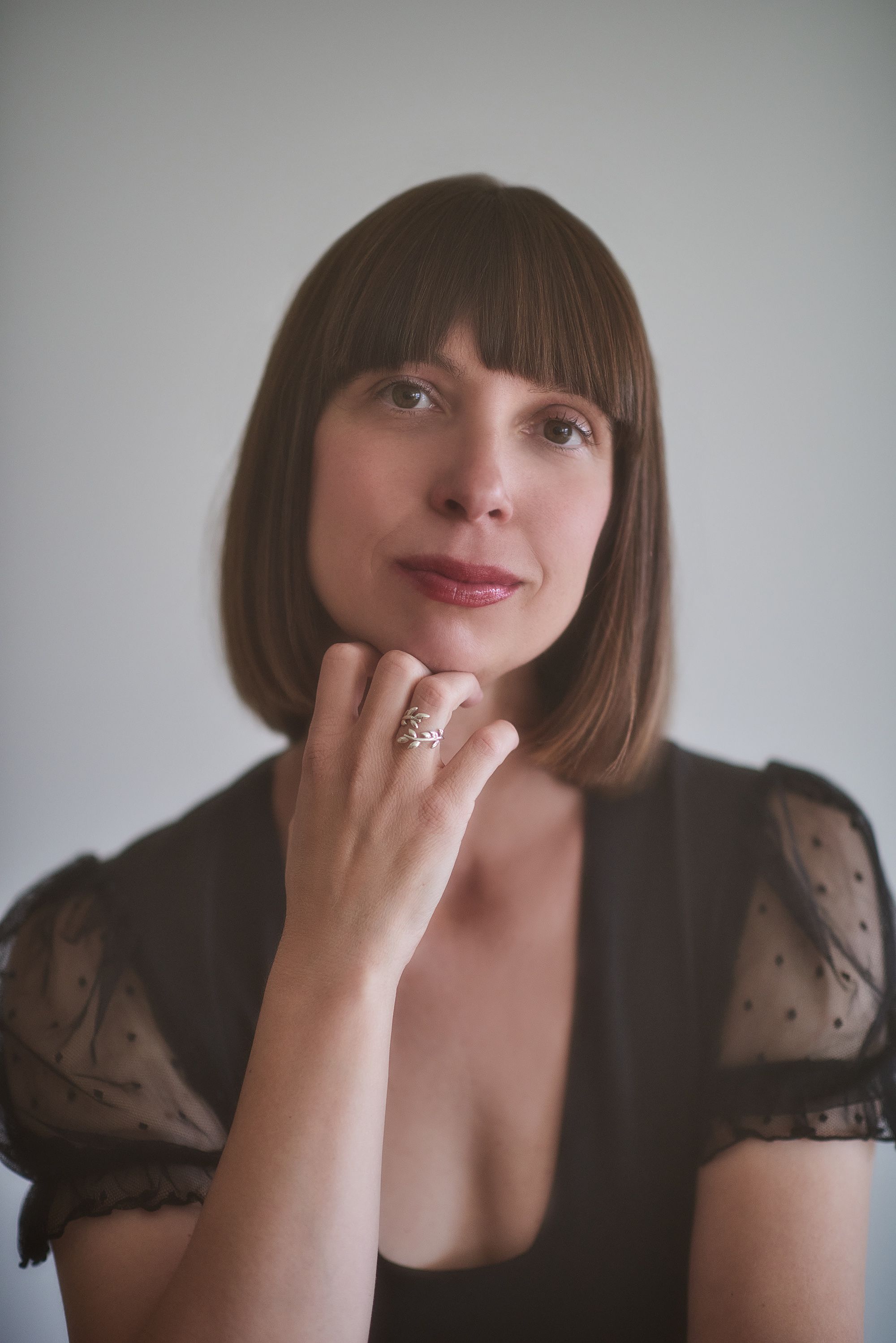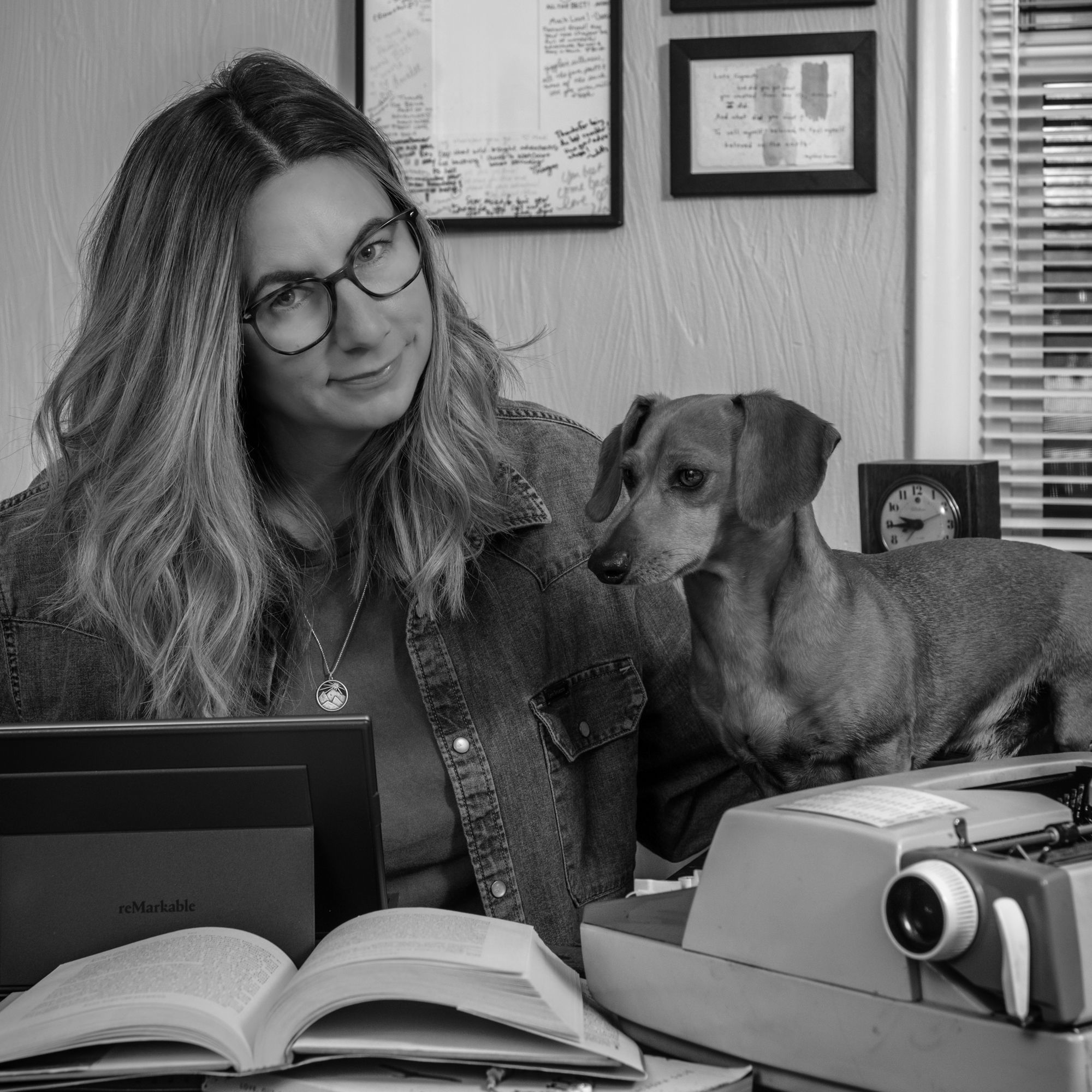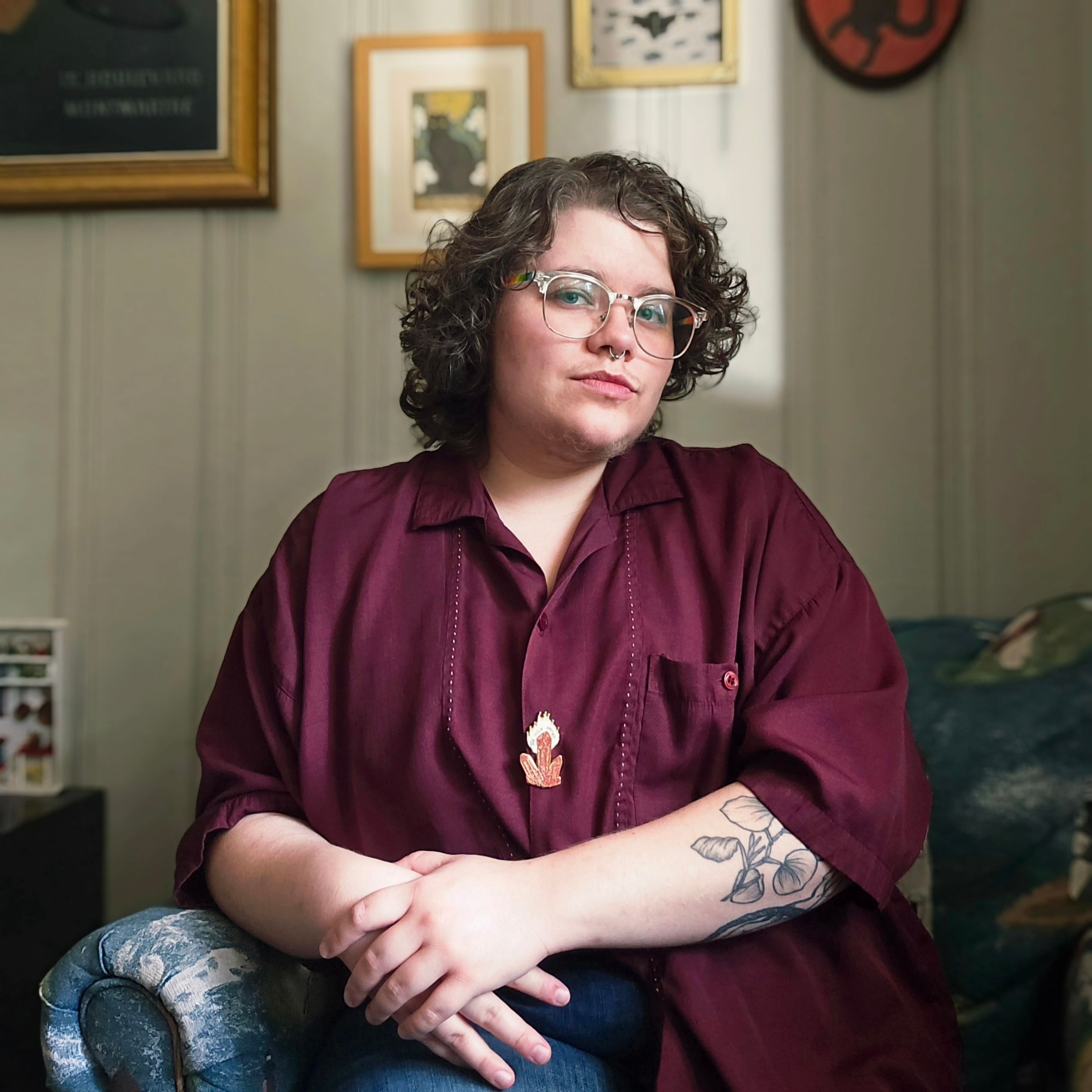Annelise Schoups: In this collection, minimal punctuation, shapeshifting pronouns, and various time markers give the sense of ebbing and flowing, squishing and stretching, to our understanding of time and existence. Was it always your goal to call time into question?
Carolyn Hembree: When I chose the title For Today, which I think of as both dedication and idiom, I hoped to invite the ideal reader to follow from title to Christensen epigraph that then further qualifies “today” as an “accumulated weekday of Angelic orders” to the first word, less, a counter to the epigraph’s accumulation. I want the ecstatic, the incorporeal, and the quotidian amidst high wattage grief. I’m asking a lot. Will the reader hear the epigraph return fifty pages later in the long poem’s cento? On the one hand, I want the book to touch as many people as possible, but I also have an obligation to write the book I want to read. And I’m an odd bird.
From the get, I used time markers to explore memory, ephemerality, and the limitations of language. During revision, I attempted to simplify them and make them consistent. For example, when revising the long title poem, which originally opened with the closing mother-child vignette, I decided to write the timeline by starting in the morning and to limit the poem to a single day in the tradition of Woolf’s Mrs. Dalloway and Mayer’s Midwinter Day. While these choices clarified the narrative, I then felt stuck in a kind of hyper-presentness that didn’t allow for much scope. Also, early readers signaled that they needed some breaks/brakes.
From there, I got rid of most end punctuation in the title poem. On the face of it, this choice seems counterintuitive as punctuation can contribute usefully to pacing, but my gut told me to free myself up. Then I began to work more radically with field composition in an effort to represent the speaker’s perceptions “in real time.” I hoped to demonstrate the gaps and shapes in the speaker’s perceptions and surroundings. Once I distinguished the speaker’s memories and the documentary pieces, such as the father’s 1960s letters from Germany, from the dominant narrative of “today” with significant white space, the scope seemed to enlarge.
AS: I’m curious about some of the symbolism you work with, especially those with reference to Anthropocene climate disasters, like more frequent and severe storms or floods. How does your relationship with nature in general and water in particular make its way into your writing?
CH: All of my poetry seems to boil down to place and voice (their intractability)—what CD Wright called “geography wedded to its people.” My three books are set in the South, the region where I was raised and where I live now. While my second collection, Rigging a Chevy into a Time Machine and Other Ways to Escape a Plague, touches on the exploitation of Appalachia, For Today deals directly with Anthropocene climate disasters, especially human-made disasters that lead to flooding in the Gulf South.
Since much of New Orleans is below sea level, we are particularly vulnerable to “storms,” a term we use for thunderstorms, tropical storms, and hurricanes. Like everyone I know here, my relationship to water is messy. With this collection, I attempt to give a sense of how some neighbors, friends, and I live. When the pumps for the neighborhood are offline during a heavy rain, an impressive current tops the curb, and cars flood unless parked on “higher ground.”
To write about my home, I spent years walking and taking notes, researching the city and region, and interviewing residents. For example, the long poem includes a page on the disappearing batture community, folks who reside in the twelve homes on stilts built on the banks of the Mississippi outside levee protection. Depending on the season and rains, these homes (often called “camps”) are sometimes in and sometimes out of the water. Aside from visiting the settlement frequently, I studied Macon Fry’s They Called Us River Rats: The Last Batture Settlement of New Orleans.
Leaving my house, I can turn right, walk for fifteen minutes, and step into the river, which I like doing. During carnival, some walking parades go down to the river to spread ashes or otherwise pay tribute to their dead. A couple of years ago, I paid tribute to my friend Valda (V in the book). As New Orleans photographer Cheryl Gerber writes in the introduction to her book The Danse Macabre, “We celebrate life and death unlike any other place on Earth.”
AS: While we’re on influences, let’s talk about some of the source material you used. We see nods to Christensen, Rilke, and a number of musicians. How did you come to lean on those artists for this collection, and to what extent do other forms of art inspire your work?
CH: I reference music, art, and poetry to elegize my father and celebrate my child who was born in New Orleans three months after Dad died. As the book is set in the Gulf South, our rich culture provided source material. To fully immerse myself in the world of a manuscript, I view and take photographs, some of which I enlarge to poster-size and hang on my office wall. Throughout the writing process, I viewed a series of photograms from Flood State by New Orleans fine art photographer Jennifer Shaw. In an incredible turn of luck, she gave permission for one of the pieces from this series to appear on the book cover.
In the opening sonnet crown, “Some Measures,” which is a confidential address of sorts, the speaker references musicians and poets whose work she and her late father knew: The Fugs, the Violent Femmes, Captain Beefheart, Philip Glass, Raleigh, Marlowe, Hopkins, and his beloved Rilke. My main goal with this poem, which I started not long after his death, was to resurrect my father by capturing our way of communicating. A German professor, translator, and musician, he would play a song or sing it (rather badly) to communicate his feelings. He quoted poetry too. It was often ridiculous or silly and just as often heartfelt. For the sonnets, I followed suit by referencing music and poetry rather than saying a thing outright. That’s how we talked. One of my early memories is of him preparing for class by translating Celan’s “Todesfuge.” Dad’s translation of Rilke’s “Herbst” is included in the notes of For Today.
While working on the book, I reread the Duino Elegies—my dad’s copy of Stephen Spender’s translation as well as other translations listed in the notes. I don’t know German and only recall a little French. Comforted by Rainer Maria Rilke’s existential search for meaning, his spirituality and mysticism, and his argument that we need the dead though they may not need us, I tried to internalize his sequence while writing the long poem. Rilke’s angels led me to Inger Christensen’s alphabet, a text I had studied decades before. Because of the role of the mother, the presence of children, and the threat of ecological annihilation, I felt a kinship between alphabet and For Today. Inspired by Christensen’s catalogue of the ordinary and extraordinary as well as her formal constraints (the partial abecedarian and the Fibonacci sequence structure), I riffed on her book in an attempt to create a love language between the speaker and her daughter.
AS: The definitions you use to carry the concept of naming things throughout feel reminiscent of Anne Carson’s Nox, which is also an unpacking of grief. How do you leverage etymology to encourage a quest for truth without making it explanatory or prescriptive?
CH: When Nox came out in 2010, I remember passing the elegant box around my poetry workshop and watching students marvel at the accordion-like foldout. The way she frames her elegy for her brother with her translation of Catullus’s elegy makes Nox an exemplar of how to use etymology as a “quest for truth.” Although I am neither a translator nor a scholar, Nox, Autobiography of Red, and Red Doc> influenced my use of etymologies in For Today.
During the writing process, I tacked the following passage from Red Doc> on my office wall: “A SALMON ANSWERS / Ida when G asks. Some / conversations are not / about what they’re about. / The word conversation / means ‘turn together.’ / Turn a salmon turn home / turn Prometheus a hopeful / god. […]” As you mention, including etymologies and definitions in a poem can come off as “explanatory or prescriptive.” Carson defines the word conversation by its Latin roots com (together) and versare (turn) without overexplaining. Also, this passage taught me that etymology can allow the poet to suddenly shift discourse. I love how the definition allows her to pick up the word “turn,” which she then repeats in the imperative statements that follow.
In the spirit of Carson, I tried to do more than simply gloss a word or relay its origin story. Several etymologies in For Today occur at moments when the speaker is searching to understand herself and others. For example, the passage, “[to forgive means “to give as before],” refers to the speaker grappling with her mother’s mental illness and addiction earnestly, whereas other references to the mother are filtered through dark humor and drama. By considering the origin of the word forgive, I intend to relay that the speaker considers her mother’s existence prior to her own and prior to the onset of disease.
In another instance, the speaker recalls a phone conversation with her father about the West Nickel Mines School shooting, a femicide that took place in the Amish community in 2006. By walking the word telephone back to its meaning, “far voice,” I hope to evoke the dead father as a far voice but also deepen the sonics and resonance by repeating the word voice later in the passage. At the heart of the book, the speaker thinks of her friend V who has been diagnosed with cancer: “Last week, V said she was curious about dying / Curious comes from ‘careful.’" From there, the speaker thinks of how she has been careful to avoid looking below V’s chin and seeing her chemo port.
AS: I want to talk about your use of repetition, too, because you employ the technique in a way that creates an almost subconscious familiarity. Did you know you wanted to repeat certain lines or concepts? How did you go about collaging them throughout?
CH: For the first five years of this ten-year project, I wrote the fixed and nonce lyric poems. While I’m not a formalist, I enjoy writing repeating forms, such as the opening sonnet crown and the villanelle that follows. Completing the sonnet crown—the most collaged piece in the book—took a couple of years, whereas I wrote the villanelle, “La Dictée,” after dinner one night and made a few revisions later. Obviously, the crown is a more demanding form. Though I had the blueprint of the seven-sonnet cycle with repeated lines, I also had the weight of the “tradition” (not to mention the excellent sonnets being written now by poets like Diane Seuss and Terrance Hayes). My poems tend to be pretty dense as I like to include more repetition (sounds, words, variations) than a form requires. Someone—I wish I could remember who—advised that rather than agonizing over the teleutons of a sestina, to repeat other words that appear in the poem (agonizing over them, also I suppose). Of course, that sensibility doesn’t work for everyone, but “I like a look of Agony.”
In “Poetry’s Over and Over,” from her collection of essays In the Blue Pharmacy, Marianne Boruch discusses repetition as a “voiced pause” or an interval in which the reader/listener awaits new language. With my occasional poem, “August 29, 2005,” titled after the date Hurricane Katrina made landfall, I attempted to make “O Pony of South Derbigny” a “voiced pause” that loses meaning as it is repeated. Of course, that's not how refrains always work. In spite of being repeated sixteen times in Etheridge Knight’s great “Belly Song,” the refrain “this poem” does not act as a voiced pause. Why? Maybe because the refrain frontloads sections and stanzas, because it appears multiple times as a single line, or because the refrains are stacked together, “this poem” is hot on music and meaning. I envy his craft, which I can't quite figure out.
When I was in graduate school at the University of Arizona, the poet Jon Anderson offhandedly told us that when we establish whatever—phoneme, image, refrain, syntax—in the opening lines, the reader will recognize its recurrence later. This advice was helpful as I wrote the long poem and considered repetition across the book. I attempted to establish as many patterns as I could in the first two pages of the title poem. In sum, repetition is generative for me, but also a great deal of design went into the patterning. I think a lot about when I want the reader to work and when I want them to glide along.
AS: Many of the poems are self-aware enough to include evidence of revision. Can you speak a little to your revision process?
CH: I scribble in my car, in bed, on walks, and wherever else. Later, I type my scribbles (sometimes prose, sometimes lines) into a document that expands to as much as a hundred pages. From there, I begin hacking away—add, hack, add, hack. At some point, a contour begins to emerge (line length, stanzas, refrains). I let myself wander down false paths. Ultimately, though, if an idea gets more important than the poetry (too much “thinky-thinky,” as Theodore Roethke would say), I head in another direction.
I can’t find the source but keep these words from Brenda Hillman tacked above my writing desk: “We walked through night until there was a poem.” It’s terrifying—this night that lasts years—but I crave the privacy and inwardness. Pretty late in the process, I ask my readers to take a look and offer some notes. Then I make edits or go back to the drawing board.
Emily Dickinson, a poet I’ve loved for as long as I can remember, copied her poems into fascicles for posterity (we assume), yet a number of these “finished” works include alternative phrasings. In this collection, some revision asides are cast as “mental notes” and bracketed like “[cut typeface pun],” which originated from a note to myself jotted in the draft’s margin. (I didn’t want a pun there for the sake of tone.) Other “mental notes” transcribe feedback from readers that I couldn’t figure out how to incorporate. While I value symmetry, artifice, and strife, I most value human error in art—even failure. With future projects, I hope to open myself to greater failure.
